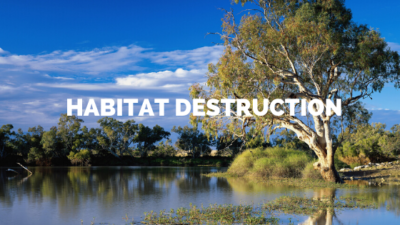Why do deadly human diseases arise in biodiversity “hot spots”?
Just a decade or two ago, wild tropical forests were thought to threaten humans by harboring the viruses and pathogens that lead to new diseases in humans, but is this really the case?
It is an error. Nature certainly poses threats. But it is human activities that cause the real damage.
It is the destruction of biodiversity by humanity that creates the conditions for new viruses and diseases such as COVID-19 to emerge. Road construction, mining, hunting, deforestation, species trafficking and many other activities are the culprit. Human behavior and activity alter ecosystems, destroy habitats of other species, and reduce natural barriers between them and us, increasing interaction and opportunities for viruses and pathogens to pass from one species to another.
Three quarters of “new or emerging” diseases that infect human beings originate in non-human animals.
Some examples are rabies, plague, MERS, Lassa fever, SARS, Zika, West Nile virus, and of course, COVID-19.
The threat is real, it is growing, and it is having a very significant impact on both our health and the world economy. For this reason, here at MONA we have been working for 20 years to educate people about conserving the habitats of these species. Now, we invite you to do it with us.
THE CHANGE IS IN YOUR HANDS
The state of alarm for COVID-19 will end and we will overcome this pandemic, but we are in a time of chronic emergency. Today, diseases are more likely to travel further and faster than before, which means that we must be faster in our responses. Changes in human behavior are needed and we can start today from home. How?
-
Share this article on social networks with your friends and people will become more and more aware of the importance of conservation.
-
Recycle your old mobile and save lives. Coltan is necessary for the manufacture of our mobiles and/or smartphones. The extraction of this mineral in the Democratic Republic of the Congo causes the destruction of ecosystems and is a threat to endangered species.
-
Support our work

